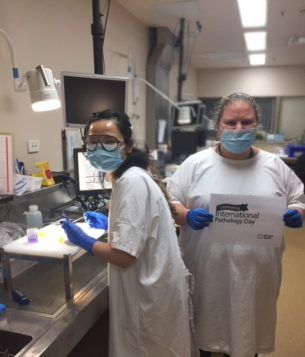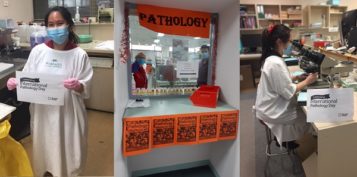
Every year, we visit our healthcare professionals for support to manage our health. More often than not, this involves a visit to Pathology.
As a patient, you glimpse the Pathology service at the beginning, when your sample is collected, and at the end, when your results are available. What you don’t see in between is a fascinating and complex process. Pathology is a medical speciality and the silent partner to the more visible aspects of healthcare with which we are familiar.
The sample you provide is examined by the Pathology team in a laboratory, using manual and automated technological analysers, and allows them to provide information to your doctor about your health. This means you can receive information about the progression of an illness, or track improvements in your health as a result of a treatment.

“Pathology diagnoses 100% of COVID-19 cases”– Pathology Awareness Australia Limited, 2021
The ‘engine room’ of healthcare, Pathology examines body tissues and bodily fluids to provide clues and answers about disease. It is an investment in preventative medicine and relevant to us at all stages of our lives. Pathology also supports cost-effective healthcare by assisting in and directing decision-making and treatment options.
“70% of all diagnoses are made using a pathology test”-Royal College of Pathologists of Australia, 2021
Pathology is indispensable to healthcare. The service is made up of a large team that specialise in different areas of scientific discipline – Anatomical, Chemical, Forensic, Genetic, Haematology, Immunopathology and Microbiology. This dedicated team also includes those that provide support, in specimen collection, data entry and triaging, transport, administration, IT, and customer service.

